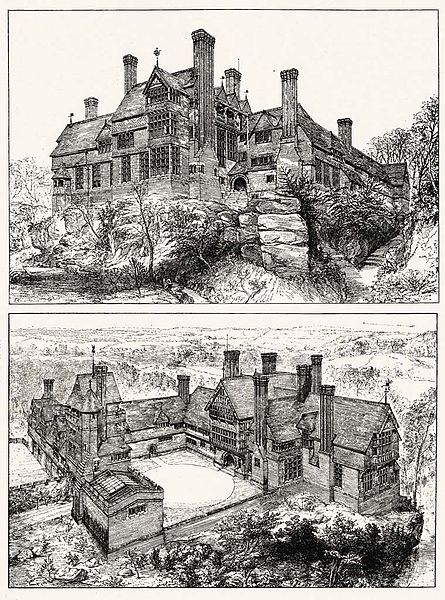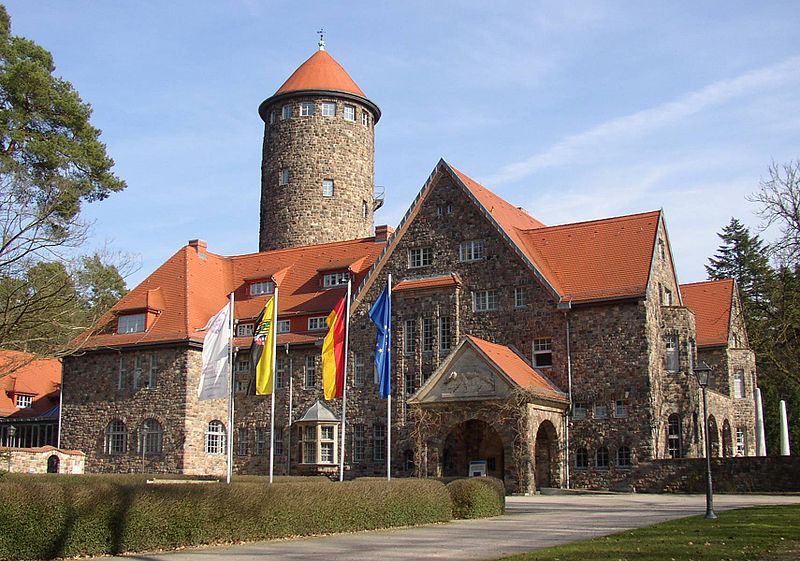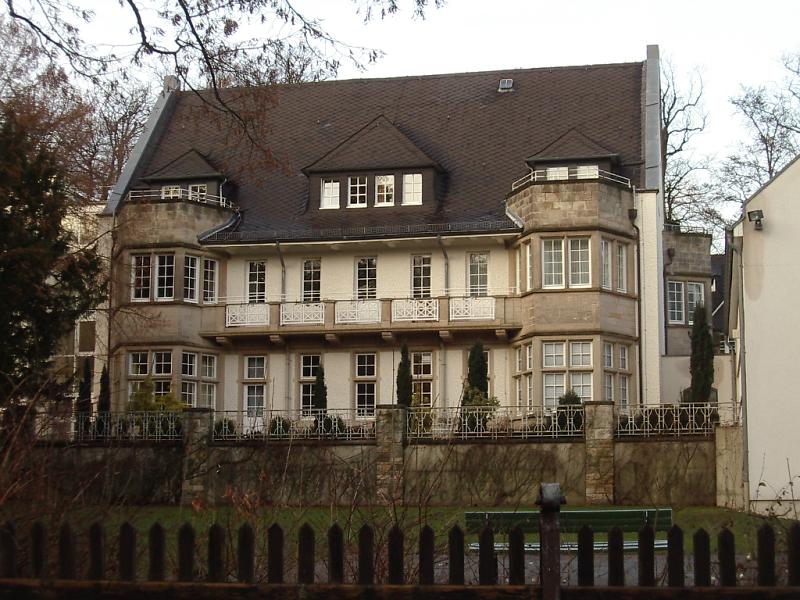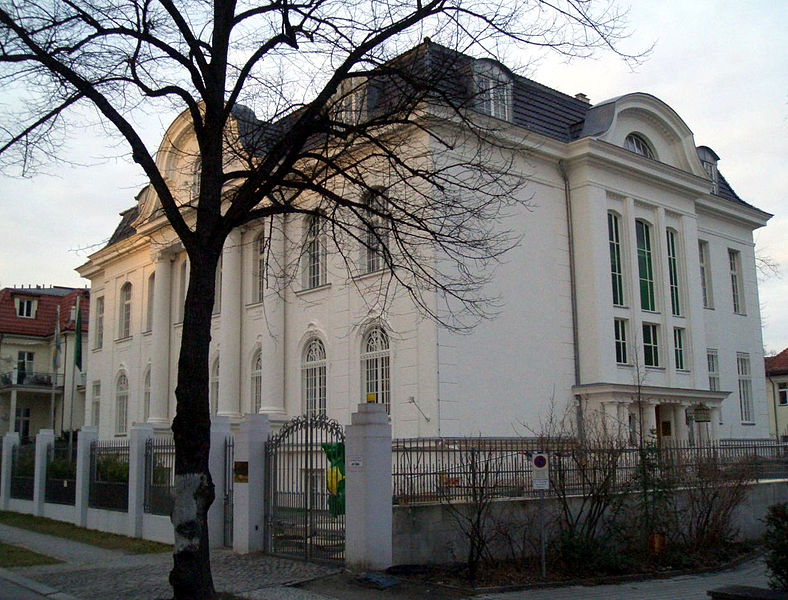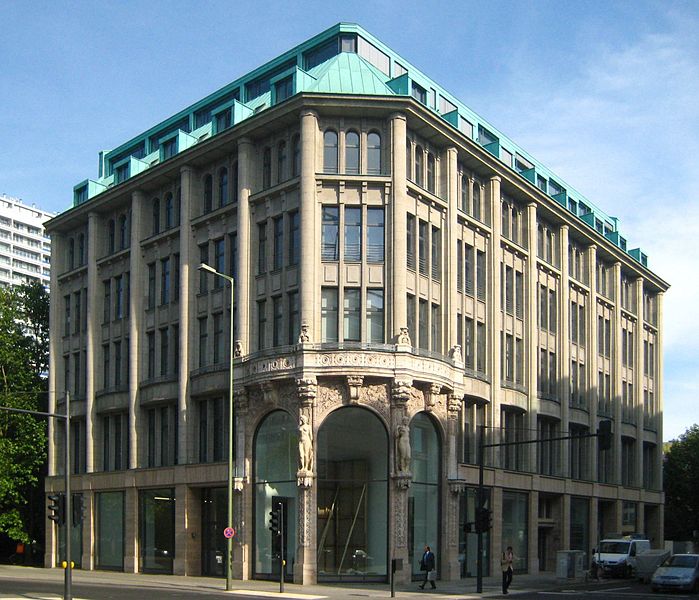<Back to Index>
- Architect Adam Gottlieb Hermann Muthesius, 1861
PAGE SPONSOR
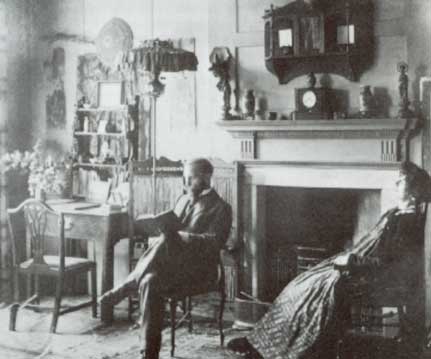
Adam Gottlieb Hermann Muthesius (20 April 1861 - 29 October 1927), known as Hermann Muthesius, was a German architect, author and diplomat, perhaps best known for promoting many of the ideas of the English Arts and Crafts movement within Germany and for his subsequent influence on early pioneers of German architectural modernism such as the Bauhaus.
Muthesius was born in 1861 in the village of Gross Neuhausen near Erfurt and received early training from his father, who was a builder. After a period of military service and two years studying philosophy and art history at Frederick William University in Berlin, he enrolled to study architecture at Charlottenburg Technical College in 1883, while also working in the office of Reichstag architect Paul Wallot.
Following completion of his studies Muthesius spent three years in Tokyo as an employee of a German construction firm, where he saw his first building completed — a German Evangelical church — and traveled extensively across Asia. He returned to Germany in 1891 where he spent periods working as a public architect and as the editor of a construction journal.
In 1896 Muthesius was offered a position as cultural attaché at the German Embassy in London, from where he was to report on the ways of the British. He focused the next six years investigating residential architecture and domestic lifestyle and design, ending with a three volume report published as Das englische Haus. Although his subjects were wide ranging, he was particularly interested in the philosophy and practices of the English Arts and Crafts movement, whose emphasis on function, modesty, understatement, individuality and honesty to materials he saw as alternatives to the ostentatious historicism and obsession with ornament in German nineteenth century architecture, and whose efforts to bring a sense of craftsmanship to industrial design he saw as a significant national economic benefit. He visited Glasgow to investigate the innovative work of the Glasgow School exemplified by the designs of Charles Rennie Mackintosh.
As well as his official reports, Muthesius also developed a career as an author, communicating his ideas and observations in an influential series of books and articles that saw him become a significant cultural figure in Germany, culminating in his most famous work Das englische Haus ("The English House"), published in 1904. He wrote about the Willow Tearooms for an issue of Dekorative Kunst published in 1905 almost entirely devoted to A Mackintosh Tea Room in Glasgow, saying that "Today any visitor to Glasgow can rest body and soul in Miss Cranston's Tea Rooms and for a few pence drink tea, have breakfast and dream that he is in fairy land." At the same time he lamented Mackintosh's unrewarded struggle to "hold up the banner of Beauty in this dense jungle of ugliness."
Muthesius returned to Germany in 1904 and established himself as an architect in private practice, while retaining a role as an official advisor to the Government of Prussia. Over the next two decades he designed a series of houses throughout Germany, drawing upon and cementing the principles and practices expounded in his famous book.
By this time Muthesius was widely recognized as an admirer of English culture, but this also laid him open to accusations of divided loyalties. In 1907 he was accused by the Fachverband für die wirtschaftlichen Interessen des Kunstgewerbes ("Association for the Economic Interests of the Arts and Crafts") of criticizing the quality of German industrial products in a lecture in Berlin. The resulting controversy saw several influential designers and industrialists withdraw from the association and set up the Deutscher Werkbund, explicitly aimed at bringing the highest standards of design to mass - produced output.
The Deutscher Werkbund was a major influence on the early careers of Le Corbusier, Walter Gropius and Mies van der Rohe, but although Muthesius was in many ways its spiritual father and served as its chairman from 1910 until 1916, he had little sympathy with the emerging early modernism, considering both Art Nouveau and the later designs of the Bauhaus to be just as much superficial styles as those of the nineteenth century.
Muthesius was one of the major architects who built Germany's first Garden City, Hellerau, a suburb of Dresden, founded in 1909. Its foundation was closely related with the activities of the Deutscher Werkbund, too. Among the many employees of Muthesius was the German Socialist city planner Martin Wagner, who applied the lessons of the garden city to Berlin on a huge scale, from 1924 to about 1932.
Muthesius continued designing houses and writing about domestic architecture until 1927, when he died in a road accident after a site visit in Berlin.
